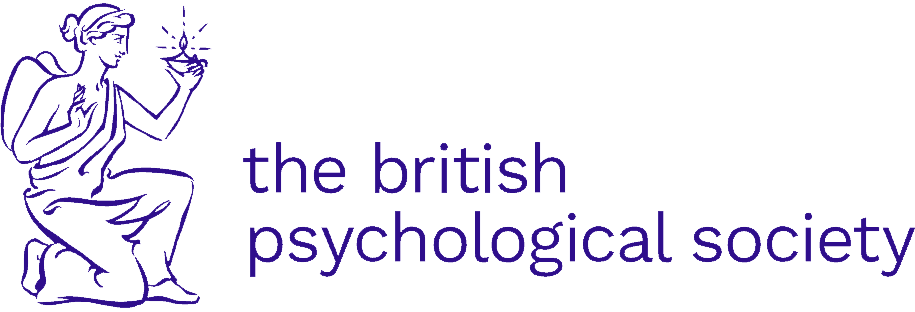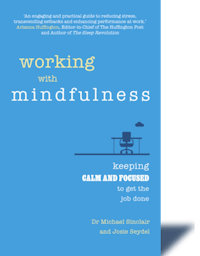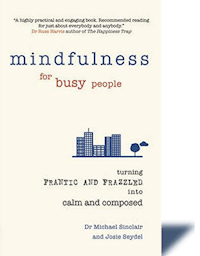Sensory Grounding Exercises for Anxiety and Overwhelm: Calm Your Mind and Body
Soothing sensory exercises for the anxious, overwhelmed, sensitive and neurodivergent. Make your day a a little lovelier.
In a world full of constant noise, bright lights, and overwhelming stimuli, it’s easy to feel anxious, stressed, or disconnected. For those who are neurodiverse or more sensitive to their environment, navigating everyday experiences can sometimes feel like too much. Sensory exercises offer powerful, practical ways to bring yourself back to the present moment, calming both mind and body by mindfully engaging the senses.
This blog is dedicated to sharing simple, effective sensory exercises to help you manage anxiety, reduce overwhelm, and restore focus. Whether you're feeling over-stimulated by stress or sensory overload, these easy techniques can help you feel more centred and grounded. Ready to calm your mind and reconnect? Let’s explore these sensory tools together!
Of course, if you are struggling and need additional support please do not hesitate to reach out for some more in-depth guidance, tailored to your specific needs and challenges. You are always welcome to email me directly at hello@josieseydel.com anytime.
Immerse Yourself in the Moment
When are we most happy? Some surprising results of research, tracking people’s lives in real time, found that we're often happiest when we're lost in the moment. And the flip side- the more our mind wanders, the less happy we tend to be. This is explained in more detail in this short TED talk by researcher Matt Killingsworth:
https://www.ted.com/talks/matt_killingsworth_want_to_be_happier_stay_in_the_moment?subtitle=en
In my book "Working with Mindfulness" (2016, co-authored with Dr. Sinclair) there's a simple mindfulness exercise called the "Five Senses Exercise” which can be easily practiced anywhere. Here’s a summary of how it works:
Five Senses Exercise:
1. Notice 5 Things You Can See: Look around your environment and identify five distinct things you hadn’t noticed before. It could be anything from the texture of a surface to the patterns on a wall.
2. Notice 4 Things You Can Feel: Pay attention to the physical sensations around you. This could be the feeling of your feet on the ground, the texture of the chair you're sitting in, or the warmth of your hands.
3. Notice 3 Things You Can Hear: Listen carefully to the sounds around you. It might be the hum of a refrigerator, the distant sound of traffic, or the chirping of birds outside.
4. Notice 2 Things You Can Smell: Bring your awareness to any scents present in your environment. If you’re in a place with limited smells, you can think of two things you like the smell of.
5. Notice 1 Thing You Can Taste: Focus on the taste in your mouth, whether it's the lingering taste of a recent meal, or simply the neutral taste of your mouth.
This exercise helps ground you in the present moment by engaging your senses, which can reduce stress and enhance mindfulness. By focusing on sensory experiences, you anchor yourself in the here and now, promoting a sense of calm and clarity.
Delight Your Senses Further
In addition to the above exercise, you may want to find and explore further ways to delight your senses. This is also a way of grounding, which can be extremely useful if you are feeling dissociated, stuck in rumination, bored, or just low. Gentle sensory stimulation and self-care are especially important if you are neurodiverse and/or are looking for ways to help regulate your emotions.
Listen to pleasing sounds
This could be sounds that are already present, like birdsong, the wind or rain, or some music. If you notice unpleasant sounds see if you can notice the silence between them, or even alongside them.
Did you know, according to revealnature.co.uk “The allure of birdsong goes beyond its aesthetic appeal: scientific research has shown that listening to birdsong can have positive effects on our mood and mental health. The sounds produced by birds stimulate areas of the brain associated with emotion, reward, and stress response. The intricate patterns and harmonies or birdsong engage our auditory senses, triggering a cascade of neurological responses that contribute to an enhanced mood”?
Here is a link to some birdsong:
https://www.youtube.com/watch?v=rYoZgpAEkFs
The Sound of Silence
Noise cancelling headphones can also really help if you feel overstimulated, disturbed, distracted or irritated by external noises.
If you can take time in your day to go to a park or place in nature it can be very soothing to ‘just listen’, especially in nature. Otherwise, if you are in a more urban place and need some respite libraries are often quiet places, as are art galleries and some museums, many religious buildings are also peaceful and welcoming, even if you yourself are not religious.
If you are travelling by aeroplane and have a wait or stopover at an airport, the multi-faith rooms (most major airports have one) can be a great space to find some peace to meditate, pray and/or take a quiet moment.
Tickle your tastebuds
By focusing solely on the act of tasting you can help to reduce anxious or overwhelming thoughts. Savour a cheeky piece of chocolate, sweet piece of fruit, or something spicy. Chocolate, fruit and vegetables, and moderate consumption of spicy foods have all been shown to boost our mood. Sometimes when working with children I invite them to imagine they are an alien who has never seen or tasted this thing before.
Take a deep breath, close your eyes, and focus on how it smells before tasting it.
- Once you take a bite, focus fully on the taste and how it spreads across your tongue.
- Take your time to allow yourself to fully experience the weirdness of how your tongue moves food around in your mouth as you begin to explore the food
- Notice where you sense different qualities of taste, when you salivate or chew, and how you feel when eating this food.
- Stay in this moment of sensory enjoyment, letting everything else fade away.
Flavour Forage
Trying and exploring different flavours of foods can help enhance concentration, reduce sensory overload and increase mindfulness – these are all important skills for helping cope with anxiety and overwhelm, and besides, why not? It’s quite a fun experiment in seeing how your mouth, tongue, body and mind react to different kinds of flavours.
This exercise can also be a playful and helpful way of introducing yourself or your children to different kinds of foods and flavours. You may even like to try with your eyes closed to enhance your sense of taste further.
- Gather small amounts of foods that represent the basic tastes: sweet (honey or maple syrup), salty (pretzel), sour (lemon), bitter (dark chocolate), and umami (soy sauce or mushrooms). Taste each one slowly, observing the exact moment the flavour hits your tongue and how it changes as you continue to taste. Focus on how your body responds to each taste.
- Try the above but instead use a range of different spices and herbs. Take small pinches of different herbs or spices (like mint, cinnamon, or basil) and place them on your tongue. Focus on how the taste evolves as you breathe and how it interacts with your senses of smell and taste together. You can also drink herbal teas to notice how these flavours develop as you sip.
- How about creating a small plate of foods that represent different colours of the rainbow (e.g., strawberries for red, carrots for orange, blueberries for blue)? Taste each food one by one, focusing on its flavour intensity, texture, and how it relates to its colour. Reflect on how the colour impacts your expectations of the taste.
- Pick a food with an interesting texture (like a crunchy apple, creamy yogurt, or chewy bread). As you take a bite, close your eyes and focus both on the taste and the texture in your mouth. Notice how the texture interacts with the flavor and how it makes you feel—soft, smooth, crunchy, or velvety. This helps you anchor your attention in the sensory moment.
Scent-sational smells
Smells are often linked to particularly evocative memories and are well known to boost our mood. The smell of coffee, baking bread, laundry drying on the line, or mowed grass are common favourites. Perhaps you have some scents that are particularly special to you like certain foods, perfumes or even places? Autumn and Winter also have certain scents associated with them such as: fireworks, apples, crisp morning air, earth smells, rain (known as petrichor), mulled wine, pine or cinnamon. Notice what is already around you or have a sniff around, maybe light some incense or burn some essential oils, and see where you may be transported, what is evoked and how your mood might be soothed or uplifted. Some smells to try are:
- Lavender – for calming, soothing, reducing stress and aiding sleep
- Citrus – Orange, lemon, tangerine or bergamot for invigorating and uplifting, and alleviating fatigue and depression.
- Rosemary – improves memory, alleviates depression and boosts cognitive function.
- Rose – calming and associated with feelings of love and comfort. Rose helps alleviate symptoms of depression and promotes relaxation.
- Peppermint – refreshes the senses, improves energy and mental focus, and improves cognitive ability.
- Jasmine – Uplifts and enhances mood, reduces stress and feelings of depression.
- Vanilla – Sweet and comforting soothes anxiety, calms and promotes happiness
For more information on aromatherapy see: https://www.webmd.com/balance/stress-management/aromatherapy-overview
Feel-Good Factor
Even if you don’t have, or enjoy, a pet or a loved one to cuddle up to, there are important benefits to increasing your tactile senses. Contact with others (including pets), when it is safe, consensual and comfortable is found to help regulate our heartbeat and can stimulate the release of oxytocin, a hormone associated with bonding and stress relief.
Without touch we would not have survived as the rather weak infants we are at birth, however many of us have some unkind history with touch, especially from other humans, so always respect your own wishes and be safe and respectful to yourself and others. Here are some ways to explore the joys of tactile sensations without the need for another human:
Wrapping up
As the colder months draw near we often need to wrap up to stay warm, but having a favourite blanket at home or snuggly socks can also provide emotional comfort. Engaging with different textures, like soft fabrics or smooth surfaces, can have calming effects and help reduce anxiety. If you are feeling overstimulated, anxious, dissociated or fearful a soft warm blanket, hoodie or onesie can help you to feel more secure, to remind you gently of the edges of your body and help your system to relax. Weighted blankets can also be excellent for this purpose. If you are neurodiverse, or especially sensitive, be extra aware of restrictive, itchy clothing, irritating labels or uncomfortable fabrics, as these can irritate your mood in subtle (and sometimes not so subtle) ways!
Fiddly Feeling
Engaging in activities that focus on touch, such as handling different materials or textures, can enhance mindfulness and sensory awareness. Try picking up objects with your eyes closed, discover what is pleasing to you. Some ideas might include: shells, pebbles, crystals, books, feathers, bubble wrap, fresh laundry, tissue paper, or a soft toy or blanket. You may like to touch things with your fingers, whole hand, or against your lips or face, as these areas are particularly sensitive. This might seem strange, but these are very primal ways of exploring the world and can be linked to our innate curiosity and sense of safety.
Cold showers or warm baths
If you need uplifting and invigorating, there is nothing quite like braving a cold shower (or even a wild swim if you are lucky enough to be near a suitable spot). Cold exposure can boost mood by increasing the release of endorphins, often referred to as "feel-good" hormones. This can lead to improved mental clarity and decreased symptoms of depression. Cold showers are also great ways to bring us back fully into the present moment, they increase circulation and boost energy levels. Build tolerance gradually and don’t stay in too long!
If you prefer something a little more soothing, and you have one, a warm bath also has great mood boosting benefits, promoting physical and mental relaxation and giving you time to wash away your worries, perhaps with some added soothing smells, a candle or two and a nice fluffy towel for afterwards.
A Touch of gratitude
Using soothing touch can calm the nervous system and ease tension. Repetitive motions and tactile sensations help release stress and promote relaxation. The following practice is one of fostering self-appreciation and enhancing self-regulation through touch.
You may never have thought about this, but our bodies are gifted to us, we just got one, free, along with this life…and this little meat-suit of yours is really doing a great and extraordinary job, it got you all the way here after all!
Spend as long as you like doing the following exercise, you can go back and repeat things you like, or skip parts you’re not so keen on, adapt the exercises or just do one or two bits. In whatever state of dress you find comfortable, perhaps with body lotion after a bath or shower, in your PJs, or fully clothed, I’m going to invite you to try:
- Starting at your head – give your hair a stroke and/or your scalp a rub – you can be gentle or give yourself a good massage.
- Now take hold of your ears and just hold them, this can be really soothing.
- You may like to softly stroke your cheeks and eyelids - that’s a sweet thing to do.
- Now give your shoulders a massage, don’t hurt yourself but do be firm, concentrate on either side of your spine and across the tops of your shoulder blades.
- Next give yourself a hug – you deserve it! Well done buddy!
- Now, try taking one hand and rub your heart area, start in small circles and spiral slowly outwards, you might enjoy a deep breath, letting out a sigh and a little song if you like. What is the song of your heart?
- Now to the same at your belly, rub in clockwise circular movements, with a slight pressure, keep the movements slow. This can help with bloating and digestion, and it’s often quite comforting too.
- Next, place your hands together, palms facing each other. Close your eyes and simply feel the texture, warmth, and pressure of your hands connecting. This practice fosters a gentle awareness of your body’s sensations and can deepen self-appreciation.
- When you are ready using your fingertips patter on your thighs gently like rain, then feather-like strokes with the fronts and backs of your fingers. Depending on your mobility move to your knees and lower legs, playing with touch and with what pleases you.
- If you can reach your feet: spend a few minutes massaging them, applying pressure to different areas, holding them, and appreciating how they support you every day. Use a scented lotion or oil for added sensory engagement.
- If you cannot reach your feet: Stand and close your eyes, feel your feet like the roots of a tree, notice the ground beneath you, appreciate how your feet support you and have carried you so, so far.
Seeing is Believing
Using the sense of sight for self-soothing and mood-boosting involves engaging with visual stimuli that promote relaxation and positive emotions. By incorporating these exercises into your routine, you can enhance your mood and overall well-being through the power of visual experiences.
Here are some effective exercises and practices that leverage the sense of sight:
Nature Visualization
Visualisation can reduce stress and promote relaxation by creating a mental escape from daily pressures. Imagining natural environments can help lower anxiety levels and improve mood.
Find a quiet space where you can sit comfortably. Close your eyes and visualise a serene natural scene, such as a forest, beach, or meadow. Focus on the details—colours, textures, and movements of nature.
For some further information and ideas on the benefits of visualisation see:
Artfully Crafted
Drawing, scribbling, making collages, mood boards, playing with plasticine, taking photos, painting, making a mess with glitter, crafting, etc. can all be great ways to boost your mood, express your emotions and self-soothe. Focus on colours, shapes, mediums and styles that resonate with you. You do not need to be ‘good’ at art, you don’t need to show anyone else (unless you want to) or to produce something that makes sense, looks pretty, accurate, or is complete. Even scrumpling up paper, snipping it with scissors, writing big, rude words, scribbling, or splatting paint can be immensely satisfying. Art therapy can boost mood and provide emotional relief by engaging the creative and visual parts of the brain. Creating or viewing art can reduce anxiety and promote feelings of well-being, so even if you don’t want to create your own mess or masterpiece you might find that looking at art you find aesthetically pleasing is emotionally soothing.
Art is hugely subjective, but you might like to look at this as a place to start, to see what inspires, calms or touches you:
https://www.youtube.com/watch?v=6YSAMo6TmkE
Beautify Your World
Creating a peaceful home environment is essential for those who experience overwhelm, anxiety, or neurodivergence. A calming space can help reduce sensory overload and provide a sanctuary for relaxation and focus. Start by decluttering—simplifying your surroundings can instantly lower stress levels. Soft lighting, like warm lamps or string lights, can create a soothing atmosphere, as harsh lighting often increases discomfort. Consider adding plants for a natural, grounding element; they not only improve air quality but can also offer a calming visual and tactile experience. Add art or objects with care, choosing things that inspire, uplift, relax or comfort you.
Remember all your senses in your home environment. Designate quiet zones or sensory corners with comforting textures like weighted blankets, soft cushions, or fidget tools to give yourself a break when feeling overstimulated. Use noise-cancelling headphones or soothing sound machines to block out disruptive noises. Finally, be mindful of smells; calming essential oils such as lavender or eucalyptus can enhance relaxation. By personalising your environment to support your sensory needs, you create a space where you can unwind and recharge, no matter how overwhelming the outside world feels.

Summary:
I hope you have enjoyed this blog and found at least some of the ideas useful. Trust in your senses, keep yourself regulated and grounded, and be forgiving to yourself for those times when it all goes a bit wonky. If you do need any further support, remember that I’m here to help. It’s a wild old world, may you find peace within it…Josie x










